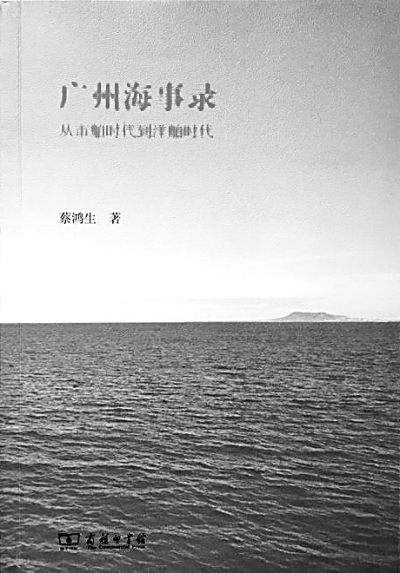Maritime affairs are a humanistic endeavor

The Maritime Records of Guangzhou
The Maritime Silk Road has been a popular focus of research in recent years. The discovery of shipwrecks, chinaware exports, maritime trade and underwater archaeology have drawn public attention. Correspondingly, studies of merchant ships, ports and relics of buildings have prospered. It seems that traditional historical studies that value people have become outdated. We know very little about even as important an ancient port city as Guangzhou (also known as Canton).
For thousands of years there have been questions about Guangzhou, like how it embraced foreign civilizations, how the interaction between Chinese and foreign cultures quietly changed the city, and how trade thrived despite piracy. However, the recent work The Maritime Records of Guangzhou by Cai Hongsheng, a professor of history from Sun Yat-sen University, illuminates these issues by outlining the footprint of Guangzhou over the past thousands of years.
Most remarkably, Cai investigates the humanistic side of maritime affairs by taking the perspective of life on ancient oceanic ships, a perspective which generally has received little attention from other scholars. A ship on the ocean is like a floating community stamped with the brands of land life. For questions such as how ancient people prepared food for voyages, it is difficult to answer just by searching the historical literature passed down through the ages. However, Cai found a clue to this question by studying the food list for the voyage when eminent monk Jian Zhen (688-763) sailed across the ocean to Japan. It gives us a glimpse of the dietary structure at that time, and it shows us the balance of staple and non-staple foods, raw grains, and solid prepared foods.
The voyages usually involved traveling far out from land, and it was difficult to take enough fresh vegetables and fruits, which are crucial to supply the human body with vitamins. According to the book, sailors carried sugarcane to reduce the risk of scurvy. In addition, the book also contains information about the division of labor during long voyages, the supply of fresh water, salvage at sea, liaison between ships, disease prevention, prayer rituals for protection against calamities, and activities for entertainment. This book overcomes the shortcomings of previous studies that paid attention only to the road, the ship and the cargo, but not the people.
Cai found clues into the daily life during the voyage by investigating the Chinese chess stones found in the Southern Song Dynasty shipwrecks near Quanzhou City as well as stone pieces from the game go and dice found in the wrecks of the ancient ship Nan’ao 1 near Shantou City. Ancient people played such games to divert themselves from the boring and sorrowful ocean life. Bronze acupuncture needles found in the wrecks show us how ancient people treated and prevented disease during the voyage.
(edited by CHEN ALONG)
